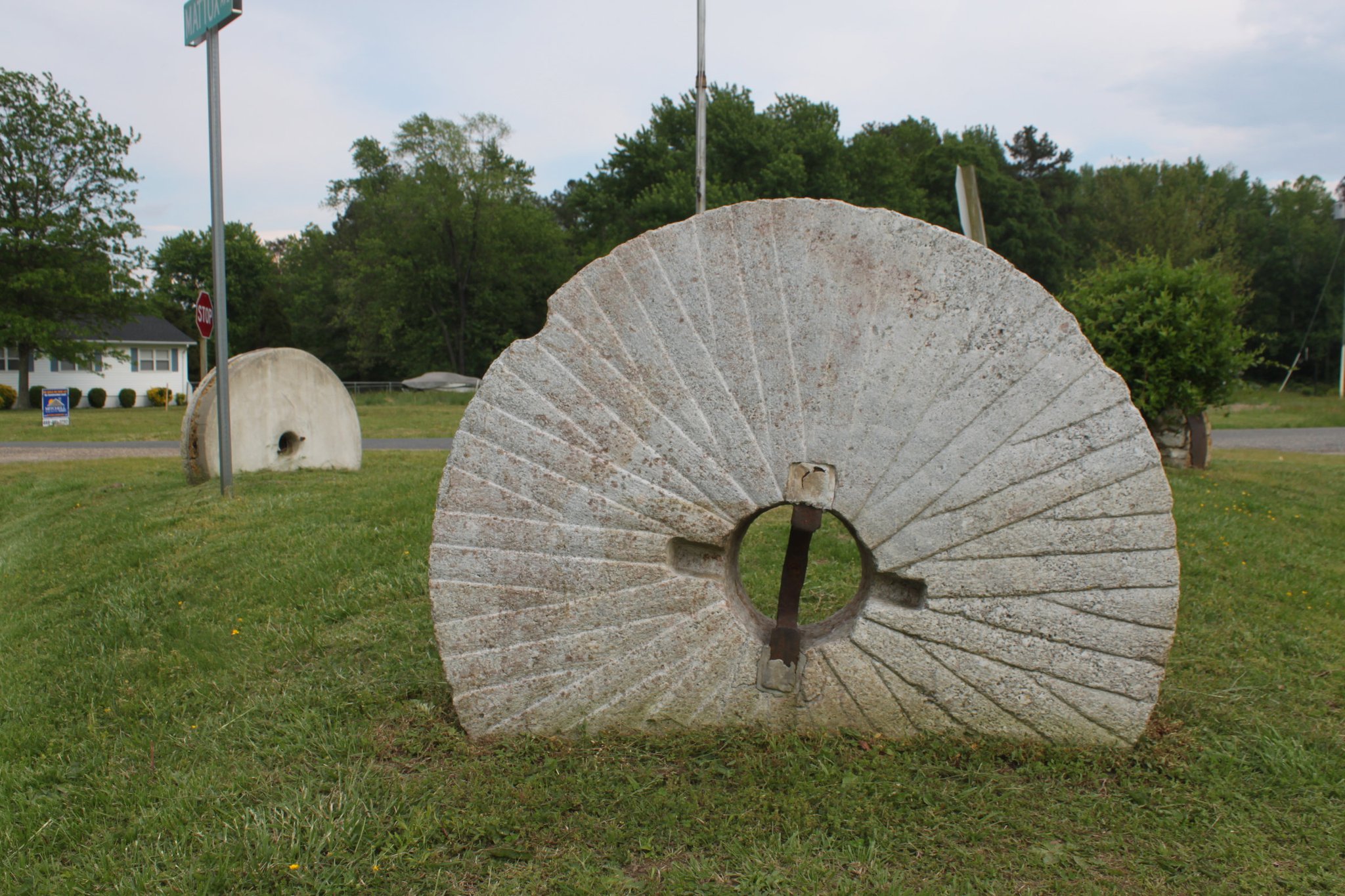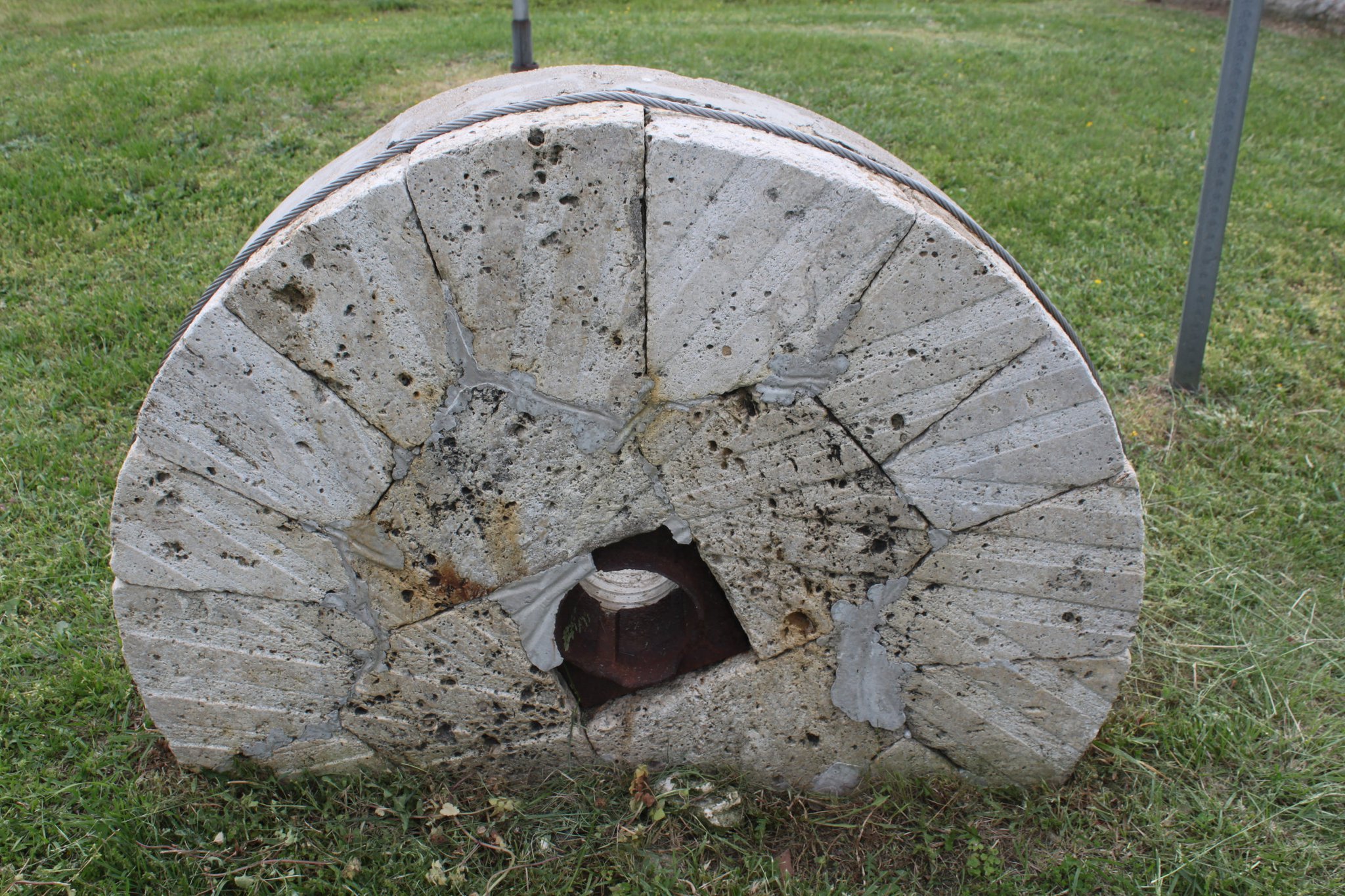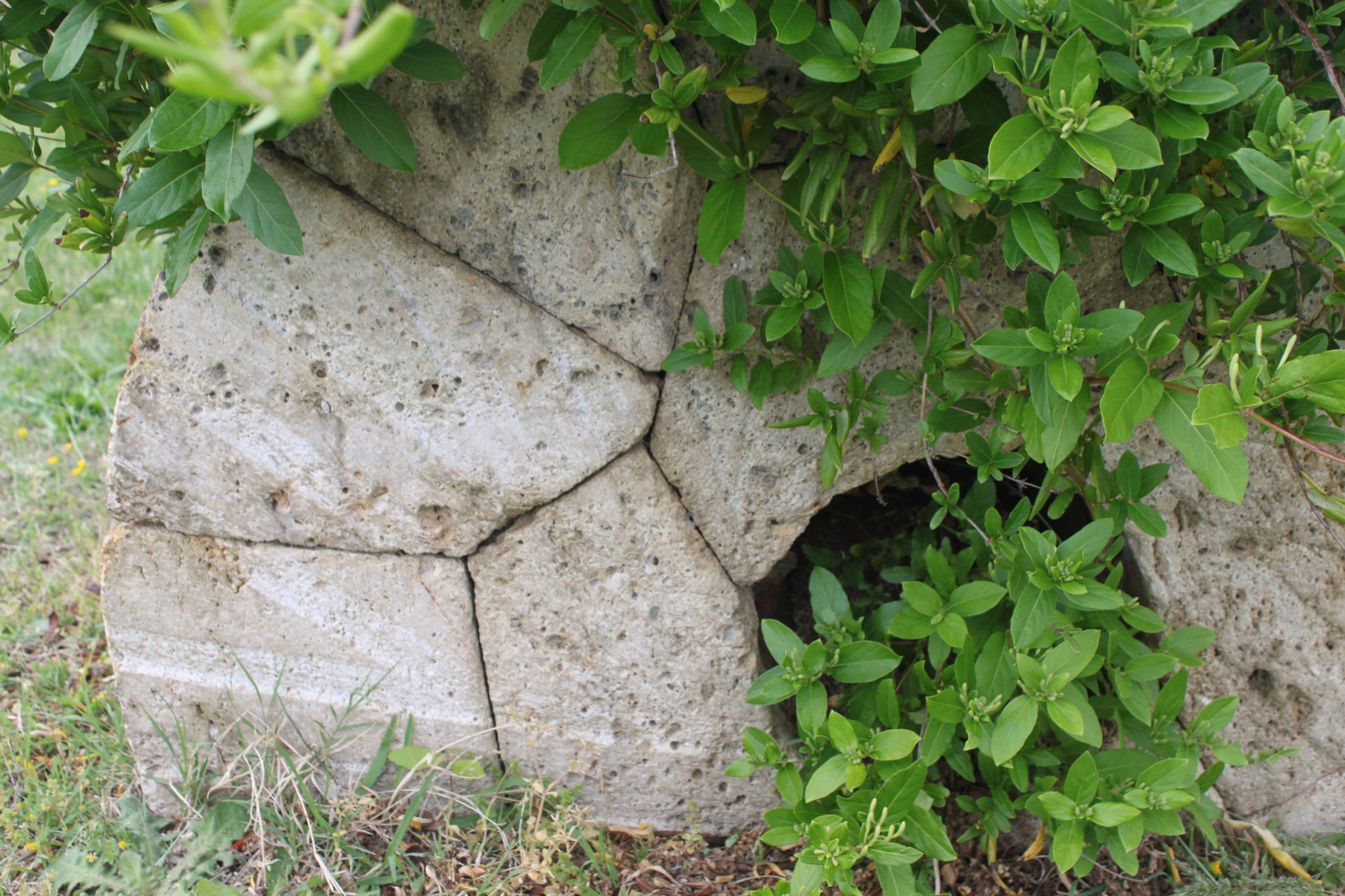Wirt's Mill (1650s-1930s)
Introduction
Wirt's Mill was a water-wheel style grind mill for corn. The mill was located near what is now know as the Placid Bay Event Venue. Remaining from the mill, you can still view 4 of the century-old grindstones on display in Placid Bay Estates.
Articles establishing dates, name, and owners
Norris, W. B. (2008). Place Names. In Westmoreland County, Virginia, 1653-1983 (p. 88). essay, Westmoreland County Board of Supervisors.Wirts Mill on the south shore of Mattox Creek, was built before 1668 and was in use until about 1912. The present name has been used since 1859, when Dr. Wm. Wirt bought the pond and the adjoining land (8 acres in all) from James B. Marye.
Eaton, D. W. (1941). In Historical atlas of Westmoreland County, Virginia (p. 48). essay, The Dietz Press, Richmond, VA.A mill was built on Mattox Creek, on land patented by Richard Brown. It was built at a very early date, but as all the land belonged to one owner no record of appraisement is shown. It was in use until about 1912, when it was known as Wirt's Mill. It was part of the "Bleak Hil" tract of land.
Newspaper Article from 1913 with detailed description of the mill and area
Newspaper - An Old-Time Mill. (1913, February 9). The Sunday Star, p. 4.
[PDF - Newspaper - The Sunday Star - 2/9/1913]
An Old-Time Mill
Most of the old water mills which Washingtonians see in this region are ruinous and abandoned. People who live near them will usually tell you that they stopped grinding "before the war": that people get their flour and meal, or their meal and flour, from the great mills that are run by steam and that turn out barrels of the nutritious dust every hour. It is strange to stand by one of the mills, the kind that ground old-fashioned grain food of the early Americans, to listen to its colonial song and watch the millstones in a little stream.
Such a mill is standing and in operation on the old Washington lands in Westmoreland County. It is now called Wirt's mill, because the Wirts and the Washingtons intermarried, and a large tract around the mill is called Wirtland. It is not far from Wirt's wharf, a frail, decrepit old landing place in Maddox Creek. It reaches out from the white and sandy shore to a point treelined above the shallow, shining waters of the creek, where steamboats may stop. After stepping off the land end of the wharf turn to the right and follow a road that leads through tilled fields and also through thickets of pine and sweet gum. The old mill, its brick walls darkened and mellowed by age, stands on the upper part of Maddox Creek at the foot of a steep wooded hill, down which a sandy road, bordered by trees and tangled vines, leads.
As you approach the mill you come to a deep pond several acres in extent, but as irregular in form as any lake could be. It is wild and picturesque, for it is a woodland stream that has been impounded in a glen and has broadened out, covering all the adjacent land up to the level of the spillway. The banks are overhanging and they give glimpses of matted tree roots veiled under ferns and vines. Big trees, of all the native kinds - sycamore and gum, oak and fox-tail pine, jack pine and red cedar poplar - cast their shadows far out over the green and placid water. The pond was formed by one of the numerous branches or rivulets that flow into Maddox Creek.
Out of one end of the pond runs a deep ditch, fringed with ferns, moss and lilies. This is the mill race. A few yards further along the water enters a flume, boxed with old cedar, and at the end of this the water falls down on the buckets or the paddles of the slowly turning, noisy great wheel of the ancient mill.
Inside the millstones are grinding. Shelled corn is being fed into them through a small, smooth polished white pine hopper and through a little chute of wood, worn to a satin polish, the white and creamy meal pours out in a soft and silent stream, falling into a trough-like bin. The miller, a mealy looking old man, is watching the flow of meal gently and sees that the hopper is kept full, or at least that it does not get empty. Every now and then he is lifting up a sack of shelled corn and pouring some of the grains into the wooden hopper.
"This mill can grind nine bushels of corn an hour," the miller is saying, "that is, if the corn is hard and dry. But this winter the corn is wet, and the mill is pretty well gummed up, so that it ain't grinding more than five bushels an hour."
Newspaper article discussing the illness of the miller
Oak grove. (1931, April 17). Northern Neck News, p. 7.
[PDF - Newspaper - Northern Neck News - 4/17/1931]
A sad case among the colored people is that of Dan Rich, the miller at the old Wirt mill. He had measles and went out too soon, took cold and now is desperately ill with double pneumonia and no hope of his recovery is entertained. Three other members of the family are ill in the same house.
Condensed version of article about the Civil War Skirmish
Norris, W. B., & Williams, I. R. D. (1983). Lore: The Skirmish of Mattox Creek. In Westmoreland County,
Virginia: 1653-1893 (pp. 663–666). essay, Westmoreland County Board of Supervisors.
[Link - Full Story of the "Skirmish of Mattox Creek"]
The skirmish of Mattox Creek, April 29, 1864. (abbreviated)
Mattox Creek was too shallow for the three gunboats and Captain Van Fleet knew it. This day his mission was clear and he enjoyed having something specific to do. So far, 1864 had offered little challenge to him or his command. There was insignificant activity in the Northern Neck of Virginia, due in no small part to his control of the Potomac. Nevertheless, contraband was still getting through. Wirt's Wharf was one landing and Dozier's dock another, both on this muddy estuary and both today's targets for the thirty-one-year-old officer whose reputation as "Regulator of the Potomac" was well deserved.
Three longboats should do, reasoned Van Fleet; eight marines to a boat. It was early and overcast. It was doubtful Dozier would be looking for him and Elizabeth Wirt certainly would offer no resistance. In any event, the Mattox Creek bridge to Oak Grove should be taken out for convenience to the locals and to ensure non-intervention by a Confederate cavalry patrol observed near Montross two days earlier by scouts of the 18th Indiana Infantry. (...)
The lead boat was proceeding more rapidly than the rest and disappeared around the sandbar beyond the dock toward the Creek bridge. The second boat veered off from the procession towards Wirt's Mill, below the wharf across the creek, while the third continued toward his own property. He pulled his hat low over his eyes and his collar high, then moved back further on the edge of the woods so he could see his house.
Even from the bridge of the Stepping Stone, Captain Van Fleet could not see his longboats. He decided to go ashore midway down the sandy beach on Payne's Point where he could observe both the Wirt and Dozier sites. The wooden bridge across the creek was about a mile and a half upstream around several curves and he would just have to await a report on that activity. He had just reached the beach at Payne's Point when he heard shots from the bank near Wirt's Mill. Three puffs of smoke remained amid the honeysuckle and weeping willow branches that blanketed the shore. More shots followed, all directed toward the approaching longboat. The soldiers changed the direction of the boat and proceeded to the Dozier dock to rejoin the marines who had landed there. Van Fleet returned to his ship and made additional troops combat-ready, if needed. (...)
The Wirt's property was unmolested due to gunfire from the shore. Neither the soldiers nor Van Fleet would ever learn that the Morgan boys, ages eleven, thirteen, and fourteen, had gotten joyful, if somewhat dangerous sport from the use of their squirrel rifles on the Union interlopers. The marines had seen no wisdom in opposing the fire from an open rowboat and had chosen to join their cohorts on the Dozier venture. Those who had proceeded on to Mattox Creek bridge had a somewhat similar occurrence. While rowing close to the bridge, the soldiers received fire from "a Confederate cavalry patrol" who had dismounted and waded out into the water behind floating logs. Faced with an indefensible position, the Yankees elected to retreat to the gunboats for assistance. Van Fleet appeared satisfied with the reports and left the area as ordered without casualties and with a confidence that the day's mission had been convincing if not necessarily decisive.


